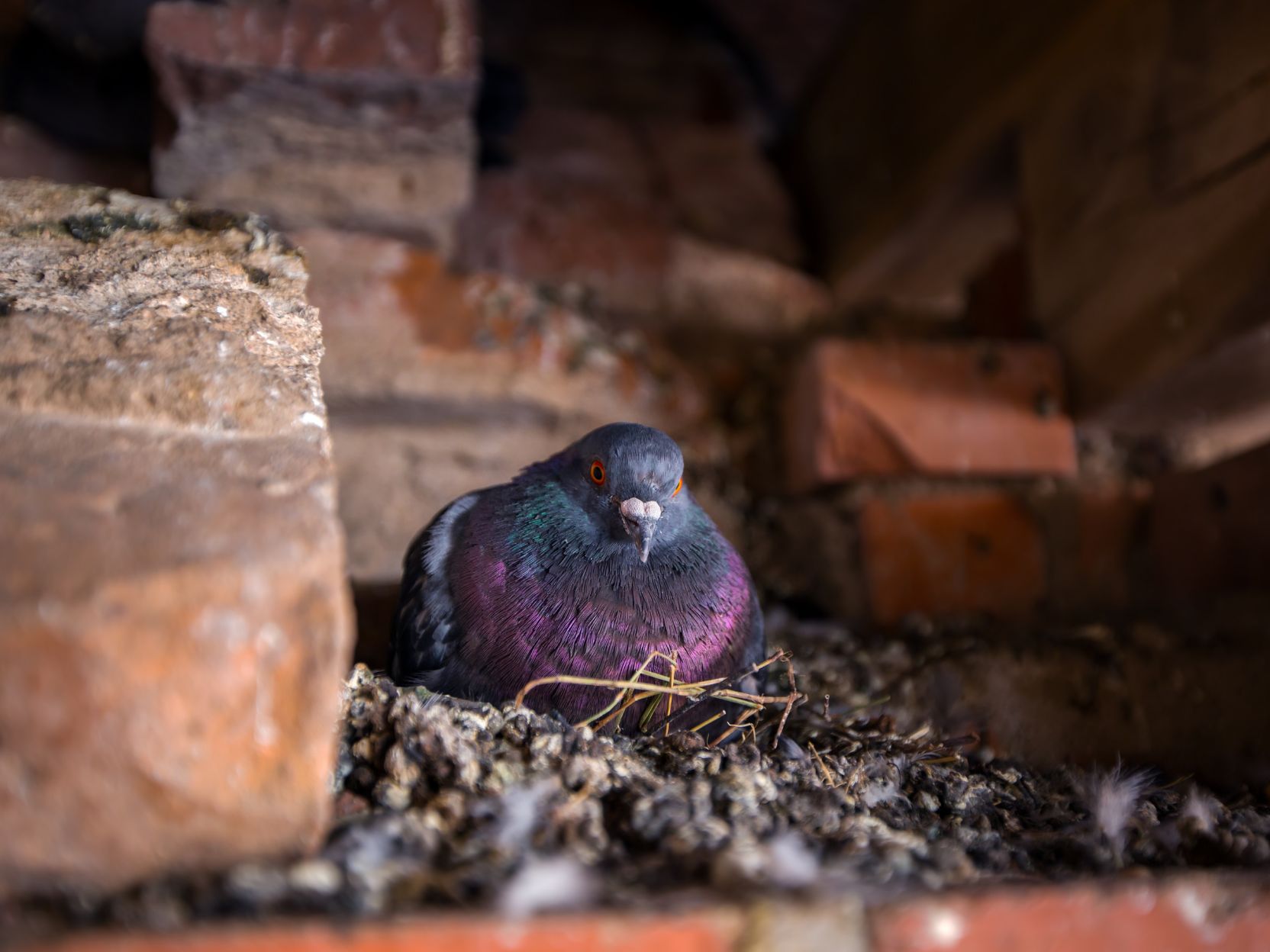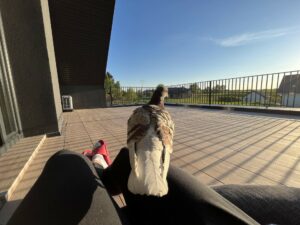Pigeons are birds that we see almost every day, especially if we live in the city. They walk around our streets, fly through the air, and make homes in our buildings. But, have you ever seen where pigeons live? Their nests are not like the beautiful, neat nests that other birds make. In fact, many people think pigeon nests are messy and not very good. But why is this the case? In this article, we are going to take a closer look at pigeons, their nests, and find out why their nests are so different from those of other birds. We will explore their behaviors, the materials they use for their nests, and the challenges they face in the city. So, come along as we delve into the world of pigeons and discover the reasons behind their unimpressive nests.
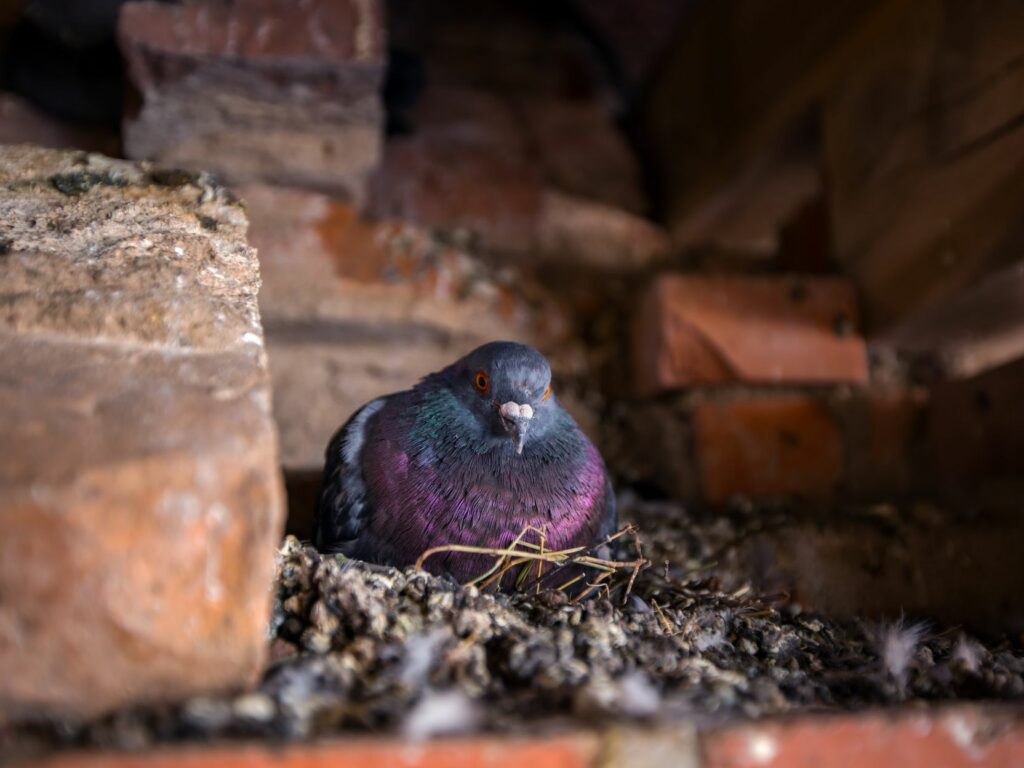
Why Are Pigeon Nests So Bad?
Understanding Pigeon Behavior
Brief Biology and Behavior of Pigeons
Pigeons are interesting birds with a lot of history. They belong to the same family as doves and have been living close to humans for thousands of years. These birds are quite smart and have a strong ability to find their way home, which is why they were used to deliver messages in the past. Pigeons are also very social and like to live in groups. They have a varied diet and can eat many different types of food, which is part of why they do so well in cities. When it comes to making nests and raising their young, pigeons like to keep things simple.
Pigeons as Opportunistic Nesters
Pigeons are known as opportunistic nesters. This means that they don’t spend a lot of time or energy building big, fancy nests. Instead, they look for spots that are already there and easy to use. For example, they might make a nest on a balcony, in a gutter, or on a ledge. They use materials that are easy to find, like twigs, leaves, and even trash. The idea is to make a nest quickly and without too much trouble. This way, they can focus more on laying eggs and taking care of their babies.
Check my article about Do Pigeons Make Nests?
The Role of Urban Environments in Pigeon Nesting Habits
Cities and towns are like playgrounds for pigeons. There are plenty of places to make nests, lots of food to eat, and fewer predators than in the wild. Buildings provide lots of nooks and crannies for pigeons to make their homes. The problem is, these spots aren’t always the cleanest or safest. But pigeons are not picky; they will make do with what they have. This adaptability has helped them thrive in urban environments, but it also means their nests might not be as neat and tidy as we might expect. In the end, pigeons’ nesting habits are a big part of their success in the city, even if their nests don’t always look that great.
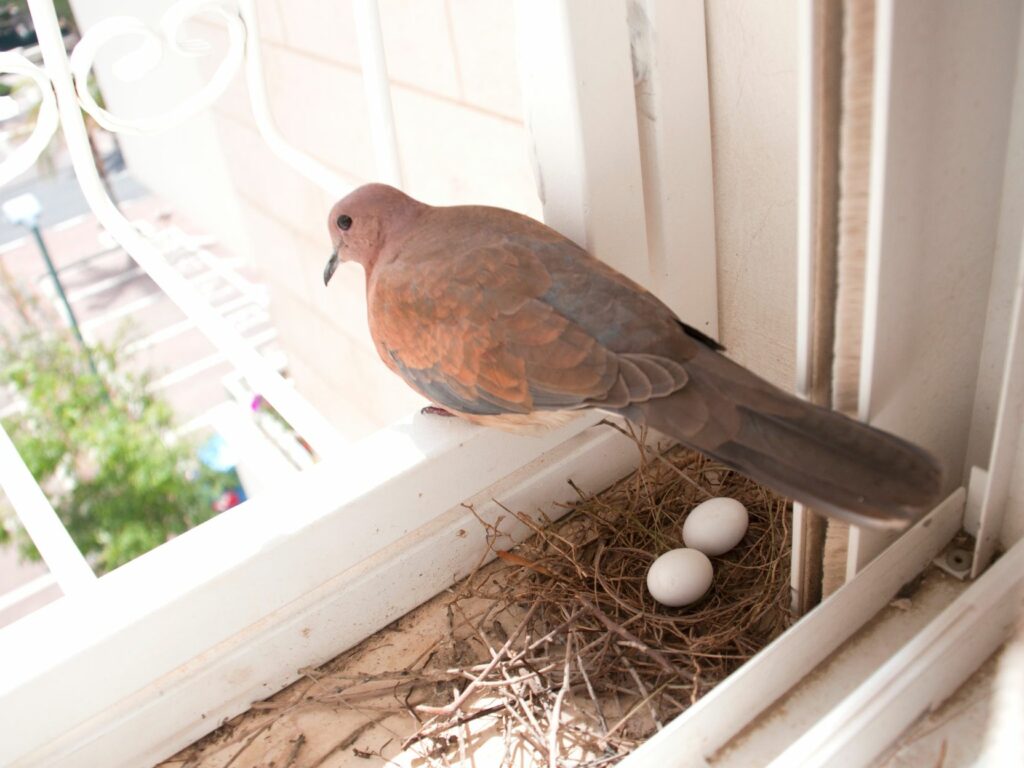
Why Are Pigeon Nests So Bad? Characteristics of Pigeon Nests
Materials Used for Building Nests
Pigeons are not picky when it comes to building their nests. They will use a variety of materials, including:
- Twigs and small branches
- Leaves
- Plastic or paper they find lying around
- Their own feathers
In cities and urban areas, the availability of natural nesting materials like twigs and leaves can be limited. Because of this, pigeons often use whatever they can find, which sometimes includes trash.
The result is a nest that might look messy to us, but it works for the pigeons.
Location and Structure of the Nests
When pigeons choose a spot for their nest, they think about safety first. They want a place that is:
- Safe from predators like cats or birds of prey
- Sheltered from bad weather
- Easy for them to get in and out of
Often, this means their nests end up in places that are hidden or hard to reach, such as:
- On window ledges
- In building eaves
- Inside old, unused structures
The nests themselves are usually not very complex. Pigeons do not weave their nests tightly or create elaborate structures. Instead, they create a simple platform to lay their eggs.
Check my article about Do Pigeons Lay Eggs?
The Size and Shape of Pigeon Nests
- Pigeon nests are typically small and compact. They are just big enough for the adult pigeons to sit on and for the baby pigeons once they hatch.
- The nests do not have an intricate design or structure. They are simple and functional, providing what the pigeons need without any extra frills.
- Because pigeons are more focused on safety and simplicity, their nests might not be as eye-catching or well-made as those of other birds.
In conclusion, the characteristics of pigeon nests reflect the birds’ priorities and the environments they live in. They choose safety and simplicity over comfort and complexity, which results in nests that might look messy or unimpressive to us but serve their purpose well for the pigeons.
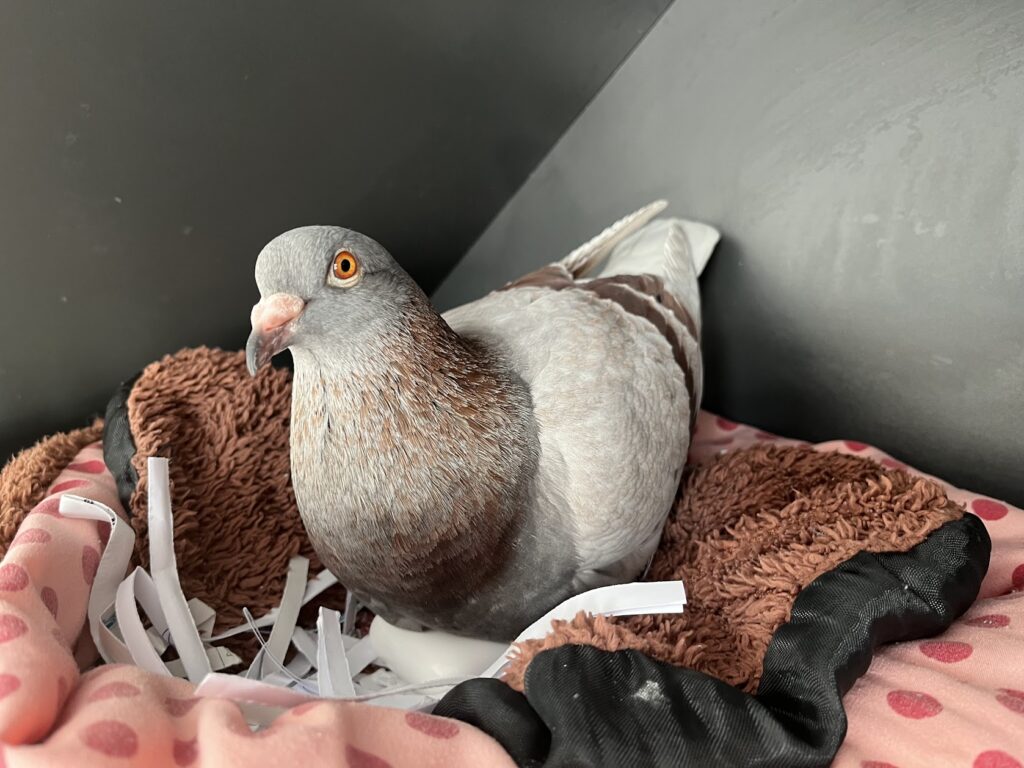
Challenges and Hazards
Vulnerability to Predators and Harsh Weather
Pigeon nests are often exposed to a variety of dangers, including predators like cats, birds of prey, and even other pigeons. These predators can easily access the nests, especially when they are located in open or unprotected areas. The nests’ simplistic design and construction do not provide much defense against these threats. Additionally, pigeon nests are susceptible to harsh weather conditions. Rain, wind, and extreme temperatures can damage the nests and harm the eggs or chicks inside. The materials used in the nests are not always durable, which further contributes to their vulnerability. This precarious situation means that pigeons must be constantly vigilant and ready to defend their nests or seek shelter elsewhere.
Issues Related to Hygiene and Disease
The simplicity and hasty construction of pigeon nests can also lead to issues related to hygiene. Pigeons often use materials that are not clean, such as discarded trash, which can introduce bacteria or parasites to the nest. Furthermore, the tight spaces and hidden locations of pigeon nests can make them difficult to clean, leading to an accumulation of droppings and other debris. This unhygienic environment can result in the spread of diseases, affecting both the pigeons and any humans or animals that come into contact with the nests. The health risks associated with dirty nests underscore the importance of pigeons finding cleaner nesting materials and locations.
Human Interference and the Impact on Nesting Success
Pigeons often face challenges from humans, who may not want them nesting on their property. People may remove pigeon nests, intentionally or unintentionally disrupting the birds’ breeding process. This human interference can lead to a loss of eggs or chicks and may force the pigeons to expend additional energy finding a new nesting site. In some cases, humans may also use deterrents or barriers to prevent pigeons from nesting in certain areas. While these measures are sometimes necessary to protect buildings or maintain hygiene, they can also negatively impact pigeon populations and their ability to successfully raise their young. Balancing the needs of humans and pigeons requires thoughtful consideration and humane solutions.
Check my article about How Many Eggs Does A Pigeon Lay?
Overall, pigeons face numerous challenges and hazards related to their nesting habits. From predators and harsh weather to issues of hygiene and human interference, these birds must navigate a complex and often hostile environment to successfully raise their young. Understanding these challenges is key to fostering a more harmonious coexistence between pigeons and humans.
Why Are Pigeon Nests So Bad? Comparisons with Other Bird Species
Examples of Bird Species Known for Intricate Nest Building
There are numerous bird species around the world renowned for their elaborate and complex nest-building skills. One such example is the bowerbird, native to Australia and New Guinea, which creates intricate structures decorated with brightly colored objects to attract mates. Another example is the weaver bird, which meticulously weaves grass and twigs together to create hanging nests that are both secure and visually stunning. These nests display a level of craftsmanship and attention to detail that is a stark contrast to the simple, utilitarian nests of pigeons.
Differences in Nesting Habits and Environments
The nesting habits of birds are deeply influenced by their environments and evolutionary history. Species like bowerbirds and weaver birds have developed their intricate nesting habits over time, in environments where such skills are advantageous for survival and reproduction. These birds often live in habitats with abundant materials for nest-building and face different sets of predators and challenges than pigeons do. On the other hand, pigeons, particularly those in urban environments, have adapted to a life where efficiency and adaptability are key. They have learned to make do with the limited and varied materials available to them, prioritizing speed and convenience over aesthetic appeal or structural complexity.
Why Pigeon Nests Appear Unimpressive in Comparison
In comparison to the elaborate nests of species like bowerbirds and weaver birds, pigeon nests can appear unimpressive and rudimentary. The pigeons’ use of whatever materials are readily available, combined with their preference for hidden, secure locations, often results in nests that are messy and seemingly haphazard. Additionally, the pigeons’ focus on rapid construction and adaptability means that they do not invest the same amount of time and energy into nest-building as some other bird species do. As a result, while the nests of pigeons may lack the visual appeal and structural intricacy of those created by other birds, they are a practical and effective solution to the challenges pigeons face in their environments.
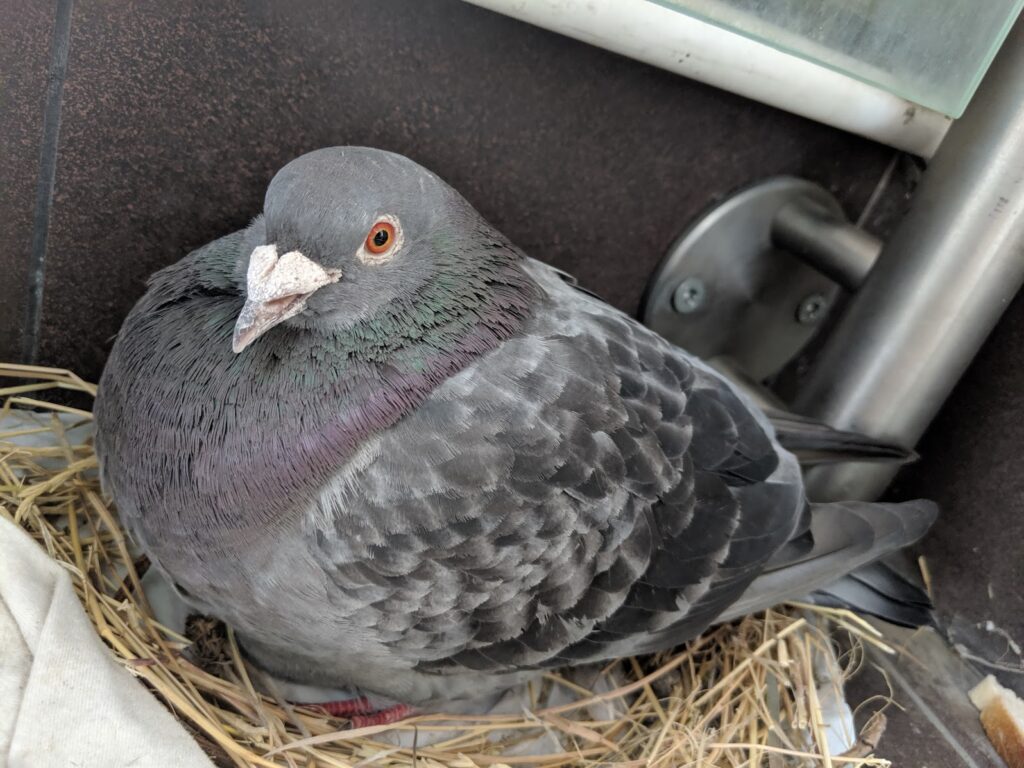
The Pigeon’s Adaptability and Resilience
Success in Urban Environments Despite Nesting Challenges
Pigeons are incredibly successful birds, especially in urban environments where other species might struggle to survive. They have managed to turn the challenges of city living into advantages. Even though their nesting habits might seem a bit messy or careless, these actually help pigeons thrive in cities. They are not picky about where they nest, using balconies, ledges, or any nooks they can find. This flexibility means they can live just about anywhere, making the most of what the urban environment has to offer.
The Trade-Offs of Their Nesting Habits
Of course, the way pigeons nest comes with some trade-offs. Their nests might not be as safe or well-protected as those of other birds, making them more vulnerable to predators or bad weather. And because they sometimes use trash or other dirty materials, their nests can be less hygienic, which might cause health issues for the chicks. But despite these downsides, their quick and easy nesting style means pigeons can spend less time building and more time on other important activities, like finding food or caring for their young.
How Their Nesting Behavior Contributes to Their Survival
Pigeons have been living alongside humans for thousands of years, and their nesting behavior is a big part of why they’ve been so successful. By making nests out of whatever materials are available, and by being flexible about where they build them, pigeons can quickly create a safe space for their eggs. This efficiency means they can breed multiple times a year, which helps keep their populations strong. Even in the face of challenges like predators, disease, or human interference, pigeons keep bouncing back, showing just how resilient they really are. Their simple, adaptable approach to nesting is a key factor in their survival and success in urban environments all around the world.
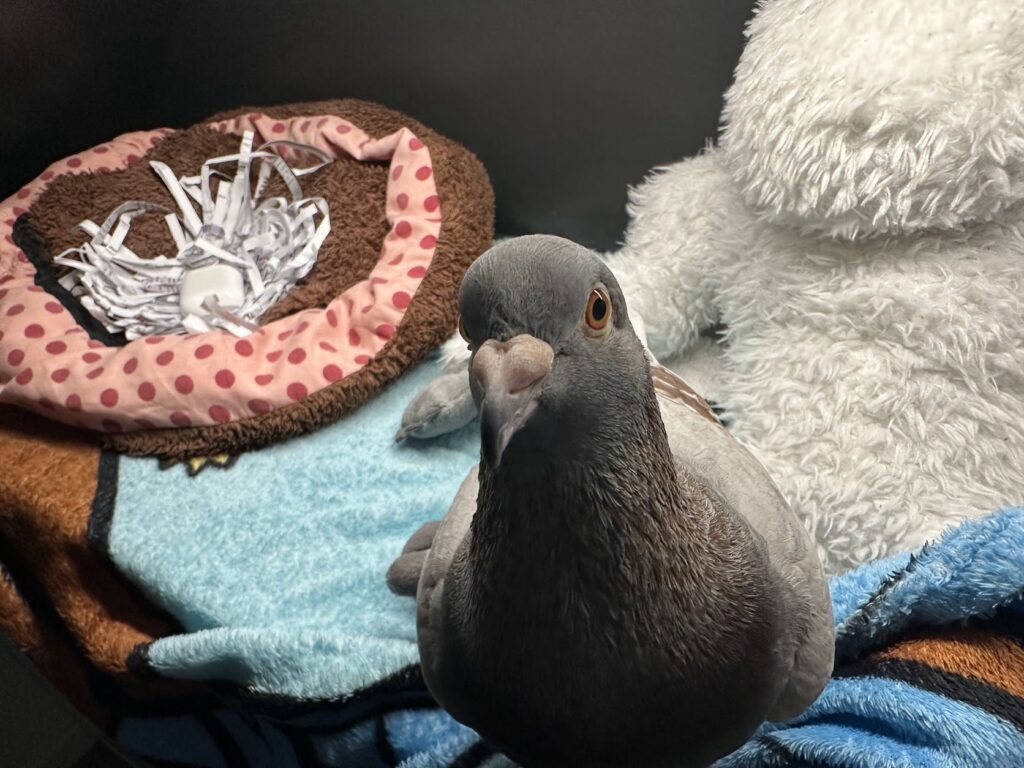
Final Thoughts
Pigeons are remarkable examples of adaptability and resilience, especially evident in their nesting habits. Despite the seemingly messy and simple construction of their nests, these birds have successfully made homes in urban environments worldwide. Their ability to use readily available materials and nest in a variety of locations demonstrates their resourcefulness. While their nests may not be as visually impressive or well-protected as those of other birds, the trade-offs allow pigeons to focus on other survival activities. As we observe these ubiquitous city dwellers, it’s important to appreciate their unique approach to nesting and recognize it as a key component of their success in navigating the complexities of urban life.
Why Are Pigeon Nests So Bad? FAQs
Why do pigeon nests often look messy and disorganized?
Pigeon nests may appear messy because pigeons use a variety of readily available materials, including twigs, leaves, and even trash, to construct their nests. They prioritize accessibility and safety over the aesthetic appeal of their nests.
What materials do pigeons commonly use to build their nests?
Pigeons use materials like twigs, leaves, feathers, and any other convenient items they can find, including discarded trash or debris, to build their nests.
Why do pigeons build nests in urban environments?
Pigeons build nests in urban environments because these areas provide plenty of accessible nesting sites, such as ledges, eaves, and other structures, as well as a consistent food supply.
How does the location of pigeon nests contribute to their simplistic appearance?
Pigeons prioritize safety and accessibility, often choosing hidden or hard-to-reach places to build their nests. These locations may limit their ability to construct more elaborate nests.
Are pigeon nests unsafe or unhygienic?
Pigeon nests can be unhygienic due to the accumulation of droppings and the use of dirty materials, which can contribute to the spread of diseases. However, pigeons do their best to keep their nests clean and safe for their young.
How does the structure of pigeon nests compare to those of other bird species?
Pigeon nests are typically less intricate and not as tightly woven as the nests of other bird species, such as weaver birds or bowerbirds, which are known for their elaborate nest-building skills.
Why do pigeons prefer to build nests in hidden or hard-to-reach places?
Pigeons choose hidden or hard-to-reach places for their nests to protect them from predators and harsh weather, ensuring a safer environment for their eggs and chicks.
How do the nesting habits of pigeons contribute to their survival in urban areas?
Pigeons’ flexible and efficient nesting habits allow them to quickly create safe spaces for their young, enabling them to breed multiple times a year and maintain strong populations in urban environments.
Do human actions impact pigeon nesting success?
Yes, human actions such as removing nests or installing deterrents can disrupt pigeon breeding and reduce nesting success. Balancing human needs with pigeon conservation requires thoughtful solutions.
What can be done to support pigeons and improve their nesting conditions?
Providing safer and cleaner nesting sites, as well as educating the public about pigeons’ role in urban ecosystems, can contribute to better living conditions for pigeons and a more harmonious coexistence with humans.

